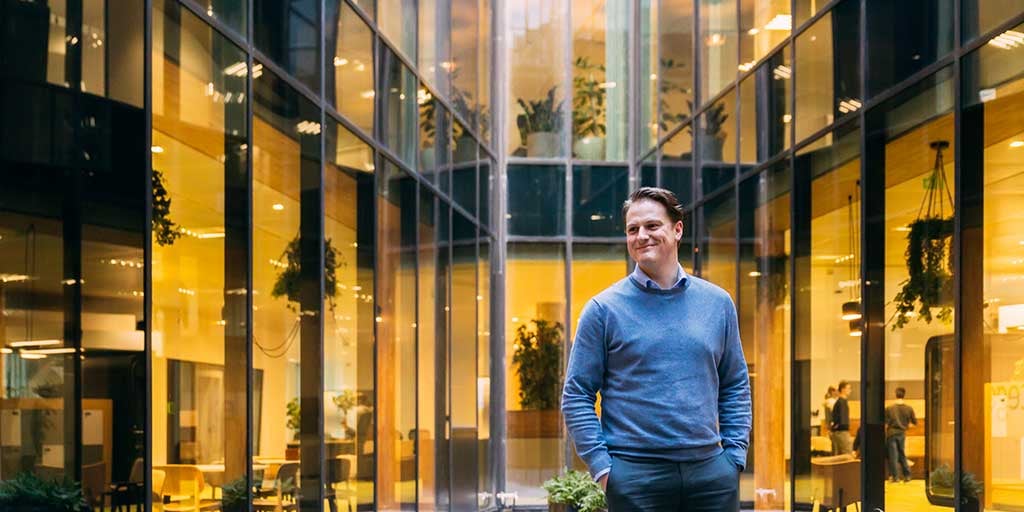Once or twice a year I sit down with one of Cegeka's topical experts. Recently I met up again with Bart Swerts, Expert Digital Workplace. We had a conversation about
- digital friction in today’s digital jungle;
- workplace security and the critical issues companies often fail to address (for too long);
- the (continued) underrated importance of user adoption;
- why you have to start thinking about your end-user journeys;
- how AI and so-called 'robo-bosses' can make our lives easier (yes, they actually can);
- why the ROI of a workplace project is rarely assessed;
- and who should be involved in a workplace project (but rarely is/are).
Let’s dive in.
Bart, it has been almost a year since we last spoke about digital workplaces. Back then, most of us were still being required to work from home. What has changed since then?
Bart Swerts: “For many companies, the pandemic resulted in a forced digital transformation – all of us at Cegeka agree on that. But many of these companies moved a little too fast. They installed tooling – for example, to facilitate working from home – in a short space of time, and only then started thinking about how they were going to use these tools in everyday life.”
“This involves areas such as governance and ownership, but begs the questions, which application do we use and what kind of arrangements are we making with one another? In a way, the pandemic put the cart before the horse, because these questions are better answered before you start rolling things out. So yes, for many end users the accelerated digital turnaround has produced digital friction, which in turn is an absolute killer for productivity.”

Do the calls coming in to the service desk also reflect this digital friction?
Swerts: “Absolutely. It's less about bugs and things that don't work properly and more about the “how”. "How do we use this tool in the best way?" and "What should we do if we want to achieve this result?" A lot of people feel as though they have been dropped into a digital jungle with no compass. They are looking for guidance, for explanation, for best practice.”
"A lot of people feel as though they have been dropped into a digital jungle with no compass."
- Bart Swerts, Expert Digital Workplace
And what about workplace security? Your colleague Fabrice (Wynants, Global Director of Security) says there is still a lot of work to be done.
Swerts: “I completely agree with him. People have become more vigilant, which is good. People's awareness of workplace security has certainly improved, as we can tell from the phishing simulations that we do for customers. Companies also understand that, in a hybrid working scenario, securing all endpoints is crucial, and we have EDR (Endpoint Detection and Response) tooling for that as well as the Cegeka SOC (Security Operations Centre) to manage it all.”
“But one thing that stands out, and Fabrice has said this too, is that there is a lot of attention being thrown at detection, but the transition to the R in EDR, the response, is not being made as easily. In other words, more and more companies are firmly locking the door, but that's where it ends. They are not yet thinking hard enough about how they will react if someone tries to break down the door. Not enough attention is paid to this, and usually this only occurs when there is a breach or incident – so too late. In this area too, our SOC can play an important role.”
Let's go back to the digital jungle. Are you saying that companies are still not investing enough in user adoption?
Swerts: “Yes, that is exactly what I am saying (laughs). It often happens that in a 1 million euro project, the 50,000 euro adoption process is dropped, while user adoption is one of the key factors of a successful workplace project. Leaving people to find their own way in the digital jungle is bound to cause problems.”
"It often happens that in a 1 million euro project, the 50,000 euro adoption process is dropped, while user adoption is one of the key success factors of a successful workplace project."
- Bart Swerts, Expert Digital Workplace
What is the secret of a successful adoption strategy?
“The problem is that it is often approached in a way that is too generic. You get people on board by involving them based on their specific role and by considering what their working day looks like. Let's take context switching, for example, i.e. constantly switching between tools and tasks, which, according to some studies, is happening up to 400 times a day. You can ask yourself whether this makes sense and whether it can be done differently. This is only possible if you find out about the specific user journey of each employee.”
“Today's organisations use a hodgepodge of applications that may have purpose individually but are never considered in the context of a full package of services offered to the end user. I believe that tool selection should be looked at more from the employee's point of view: does it make sense to hop from tool A to tool B when performing a task? And do we want that? If so, how should it be done?”

Just before summer, Gartner hosted the Digital Workplace Summit. What message stuck out to you most?
Swerts: “One thing I remember is the message 'the corporate office is not dead'. While people would like to think of working from home as a positive thing, we now see that it also has a downside, both in terms of technology (for example, with regard to security) and in terms of the social aspect. That's why Gartner are investing heavily in the concept of the “smart hybrid office” and I can see the potential for that.”
“The benefits of going to the office are something we have only just begun to realise: the social interaction, working together as a team, safeguarding against loneliness… that's what an office offers. So those aspects of the office are the ones that need to be promoted as much as possible. The smart workplace is not about comfortable armchairs, a coffee corner or x amount of square metres of space per person. It's about people being happy, being able to concentrate on their work without distraction and feeling good.”
"The smart workplace is not about comfortable armchairs or X amount of square metres of space per person."
- Bart Swerts, Expert Digital Workplace
The Gartner Summit also discussed artificial intelligence in the workplace. What can we expect from that?
Swerts: “Artificial Intelligence can help extract the right insights from the staggering mountain of data that businesses sit on – both structured and unstructured, e.g. through chat – and use that data to help end users, both reactively and proactively. The day when your laptop tells you that you have not put in enough time to complete a particular task on time is not too far off... you can now access information that may guide you as to whether you are having too few or too many meetings to get a certain project or task done. This trend of finding out about how you work and how you organise yourself is really taking off.”
!"The day when your laptop tells you that you have not put in enough time to complete a particular task on time is not too far off."
- Bart Swerts, Expert Digital Workplace
“You could even take it a step further – especially if you bring wearables into the picture. Suppose that you start sweating and your heart rate goes up. Your workstation can then step in via chat and help calm you down by asking the right questions or making suggestions. This may sound very invasive. The trick will be to use this in a sensible and ethical way; for example, by allowing employees to choose for themselves what information they want to share. And of course, by being very transparent in your communication.”

These kinds of AI powered workstations are definitely coming our way?
Swerts: “Without a doubt. Gartner expect that by 2026 a quarter of the information we receive will be produced algorithmically. The challenge here is that we need to demonstrate that this benefits the end user and that it really does make things work better, that it is not just about controlling them. But that is no easy task. If our Apple watch urges us to move, we are happy to do so because that is our choice. Employers will have to approach this subject very carefully and transparently as well.”
“On the other hand, about 60% of the work you do can be considered 'work about work'. Actual work takes up barely 30% of the time, and about 10% goes into strategy. That 60% is where AI can really make a difference. For the most part, this relates to process optimisation – large and small interventions that ensure that end users simply waste less time organising their work, figuring things out, holding meetings, moving around and so on.”
"Gartner expects that by 2026 a quarter of the information we receive will be produced algorithmically."
- Bart Swerts, Expert Digital Workplace
What takes up the most time, do you think, in this 60%?
Swerts: “Finding the right information that is relevant to your job when you are working; nothing more, nothing less. That's truly low-hanging fruit that you can almost pick off the ground (laughs). We see it time and again: the information is there, but people just can't find it, or not quickly enough. There is a lot of information and it is everywhere. Remedy that and digital frustration goes down considerably.”
Only 7% of companies are monitoring the ROI of their digital workplaces. Why is that number so low?
Swerts: “This is tricky, because the most significant benefits are in improving inefficient processes and enhancing the end-user experience, which in itself is vague and more difficult to measure. During the pandemic, other parameters, such as wellbeing and resilience, were added, which are relatively vague. This is crucial and it cannot simply be put into a ready-made formula. It is something that you really have to think about, and the HR department is ideally equipped to do that.”
Is that your advice – involve HR?
Swerts: “Absolutely, I can't emphasise it enough. Get HR involved – which is not really happening often enough. We all know that IT projects – including digital workplace projects – are actually about people and much less about technology. That's why user adoption is so important. If people don't want to or cannot work in a digital workplace, then it is a waste of time ¬– no matter how technologically advanced it may be.”
"HR should be involved in digital workplace projects – this is not really happening often enough."
- Bart Swerts, Expert Digital Workplace
“But HR are ideally positioned to help determine how digital workplaces can contribute to job satisfaction, productivity and wellbeing, both physically and mentally. They can help to think of a way of quantifying that, putting a number on it. The digital workplace is also becoming increasingly important from a hiring point of view as new employees have clear expectations of it. So not involving HR really is a missed opportunity.”


